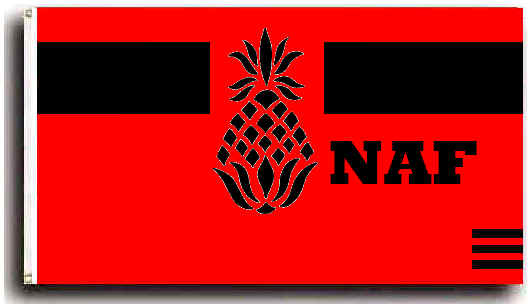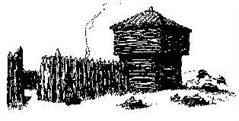|
.....
|
|

BUCK
CONNER
Editor
- Staff Writer |
Smoke Signals
Mar./Apr. '09
|
___________________________
CAMP LIFE
As
many of you know I use to sell period correct edibles,
cultivated and foraged through a firm called "Clark
& Sons Mercantile". One of the best references I
was able to find was written by one of our forefathers, Thomas
Jefferson. Shown below is that book now located at another one
of my web sites, "Clark & Sons Emporium, Ltd."
an information source for period edibles.
Remember
when viewing this information to use your "back"
button to return to this page, enjoy what Mr. Jefferson
has kept in his records of farming and gardening.
Thomas
Jefferson's farm book

|
This
manuscript volume, Thomas Jefferson's Farm Book, forms
part of the Coolidge Collection of Thomas Jefferson
Manuscripts. This volume contains Thomas Jefferson's
working records primarily of his home, Monticello, and
his private retreat, Poplar Forest, but also other farms
and estates that he owned in Albemarle, Bedford, and
Campbell counties in Virginia including Lego, Shadwell,
Tufton, Elk Hill, Willis's Creek, and Bear Creek.
Jefferson's property holdings were significant; he
inherited and purchased land, and acquired several
estates through marriage. The Farm Book contains two
lists of his properties, one dated 1794 (page
32) and another from 1810 (page
127). Each list shows that he owned more than 10,000
acres.
The
volume contains detailed information about farming
activities and Jefferson's livestock and slaves. In 1795
and 1796 Jefferson wrote short entries outlining the
plowing, sowing, planting, and cutting activities; these
"Diary" (Jefferson's term) entries are
arranged by date. He also maintained precise lists. Some
lists include the names and locations of his slaves;
others tracked the cloth, bedding, and food (fish,
bread, and beef) distributed to them.
|
The
volume contains inventories of livestock (horses, sheep,
cattle, etc.) and numbers of hogs killed during various
years. The middle sequence of pages (pages 61-119),
entitled, "Aphorisms, Observations, Facts in
Husbandry," contains concise notes, observations,
and calculations about farming subjects such as
equipment, livestock, workers, plants, crop rotation,
and spinning.
The Farm Book
contains three sequences of pages. The first (pages
1-60) and third (pages 123-174) sequences, consisting of
lists, inventories, and diaries, are arranged in rough
chronological order. The first sequence spans the years
1774 to 1805, and the third sequence spans the years
1809 to 1824, but not every type of record is assembled
for every year and some inventories cover many
consecutive years, with gaps. The middle section (pages
61-119), a sequence of concise notes about various
farming topics, includes both dated and undated entries.
|
Thomas
Jefferson's garden book

|
This
manuscript volume, Thomas Jefferson's Garden Book, forms
part of the Coolidge Collection of Thomas Jefferson
Manuscripts. In the Garden Book, Jefferson kept records
of his gardens at Monticello and Shadwell. The volume
contains information about the varieties of vegetables,
fruits, flowers and trees planted, sowing locations,
harvesting dates, and notations about weather
conditions. The volume spans the years 1766 to 1824; the
entries for the first three years (1766-1768) primarily
relate to gardening activities at Shadwell, the home
Jefferson inherited from his parents. The entries dating
from 1769 to 1824 describe gardening activities at
Monticello, the property that became Jefferson's primary
home after Shadwell burned in February 1770. Because
Jefferson was away from Monticello, the Garden Book does
not contain entries for the years 1784 to 1789; there is
also a gap between 1795 and 1801, and there are no
entries for several other years. The Garden Book
contains two types of entries. The entries for the years
1766 to 1806 consist of brief notations arranged by
date. The records for 1809 to 1824 include both
notations arranged by date and tables (Jefferson called
them "Kalendars") with columns in which he
listed the vegetables in his garden, where they were
planted, when the seeds were sowed, when the ripe
vegetables "came to table" (were harvested),
and other observations.
_________________________
Garden
Book, inside front cover
by Thomas Jefferson
1766.
Shadwell.
Mar.
30.
Purple
hyacinth begins to bloom.
Apr.
6.
Narcissus
and Puckoon open.
13.
Puckoon
flowers fallen.
16.
a
bluish colored, funnel-formed flower in lowgrounds in
bloom.
30.
purple
flag blooms. Hyacinth &
Narcissus gone.
May.
4.
Wild
honeysuckle in our woods open. -- also the Dwarf flag &
Violets
7.
blue
flower in lowgrounds vanished.
11.
The
purple flag, Dwarf flag, Violet &
wild Honeysuckle still in bloom. went journey to
Maryland, Pennsylva.,
New York. so observations cease
|
Garden
Book, page 26
by Thomas Jefferson
[1783-1792]
1783
2d. & 3d. September.
White frosts
which killed vines in this neighborhood, killed tobo.
in the N. Garden, fodder &
latter corn in Augusta, &
forward corn in Greenbriar
1790
March.
a cold wind
in this month killed all the peaches at Monticello. the
other species of fruits escaped tolerably well.
Octob.
in making the
road from where it begins to rise 1. f.
in 10. a little above the negro houses, up to the upper
roundabout in front of the house (N.E.) 5. hands did
127. yds the 1st. day and
165. yds the second. it was
12. f. wide, and they crossed
three or four considerable gullies which they filled up
with stone.
1791
Sep. 28.
Estimate of a
road rising 1.f. in 10.f.
from the Secretary's ford. begun at the point of a ridge
making into old road at head of little wet meadow.
stepped rising 1.f. in 10. f.
by guess as nearly as I could. to the upper end of a
rock 414 yds. [this rock
dropping far down the hill &
being impassable, it would be better to begin here &
work downwards & upwards
from it's head.] to the plantation fence 264. yds.
[so far thro' woods.] into the road about 200 yds
above Overseer's house 426.yds
thro' the open feild. in all 1104 yds.
& from where it enters the
road up to the house about 700 yds.
in all about 1800.yds from
Secretary's ford to the house. it would probably be
about 85 days work
30.
on trial with
the level, descending from the rock above mentioned 1.f.
in 10 would have crossed the antient country road half
way up the hill from the Secretary's ford. rising from
the rock 1.f. in 10. to the
right, it struck the fence opposite the stone spring,
376 yds from the rock.
1792
July 1.
Sunday. The
thermometer at Dr. Walker's was this day at 96°. which
he says is 3° higher than he ever knew it since he
lived at the mountains. there was no thermometer at
Monticello; but I have observed when I had one here,
that it was generally about 2°. below Dr. Walker's. &
mr Maury's. so we may
suppose it would have been 94°. It was at 97°. at mr
Madison's, in Orange on the same day, and at 99°.
in Richmond. this was probably the hottest day ever
known in Virginia. on the same day was a violent
hurricane from about the capes of Virginia Northwardly.
it overset vessels & blew
down chimneys & the tops of
houses in Philada &
N. York, &
destroyed a great deal of timber in the country.
|
I
used Jefferson books as well as several other known gardeners
from the colonial period through the fur trade in my search for
eating correctly. Surprisingly how many of the items eaten today
where on our forefathers plates as well, just referred to in
some cases by a different name.
Later
Buck Conner
 
___________________________
|